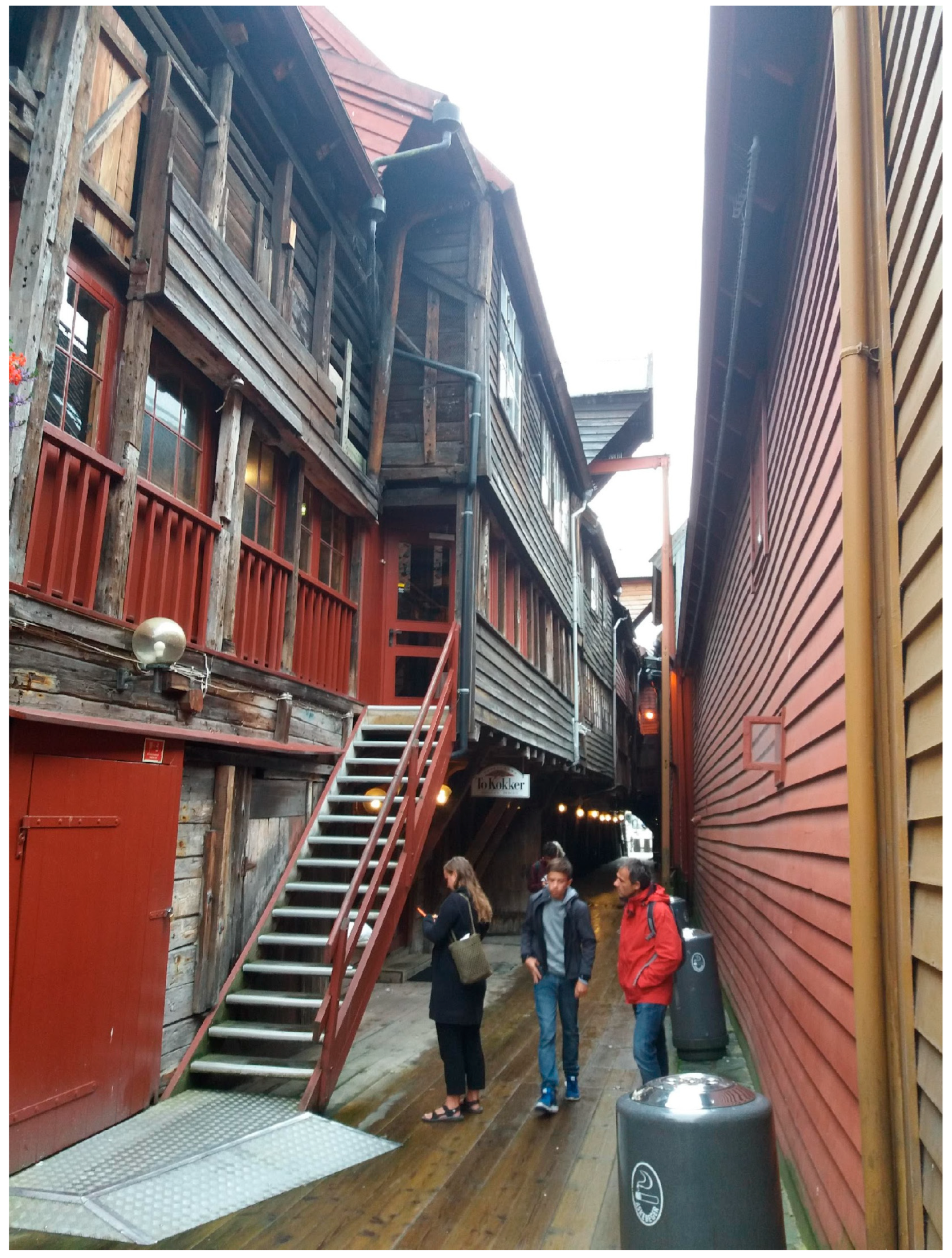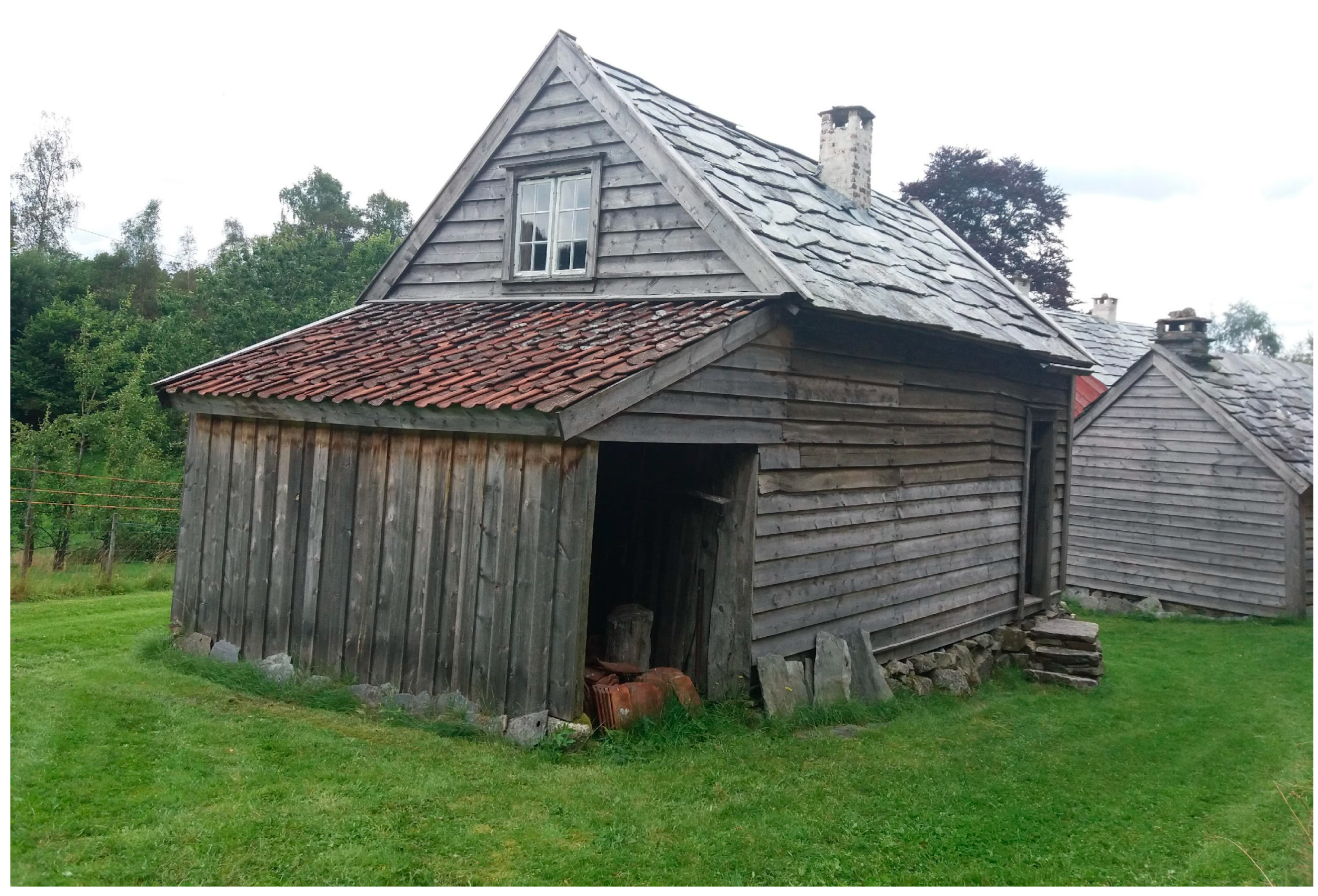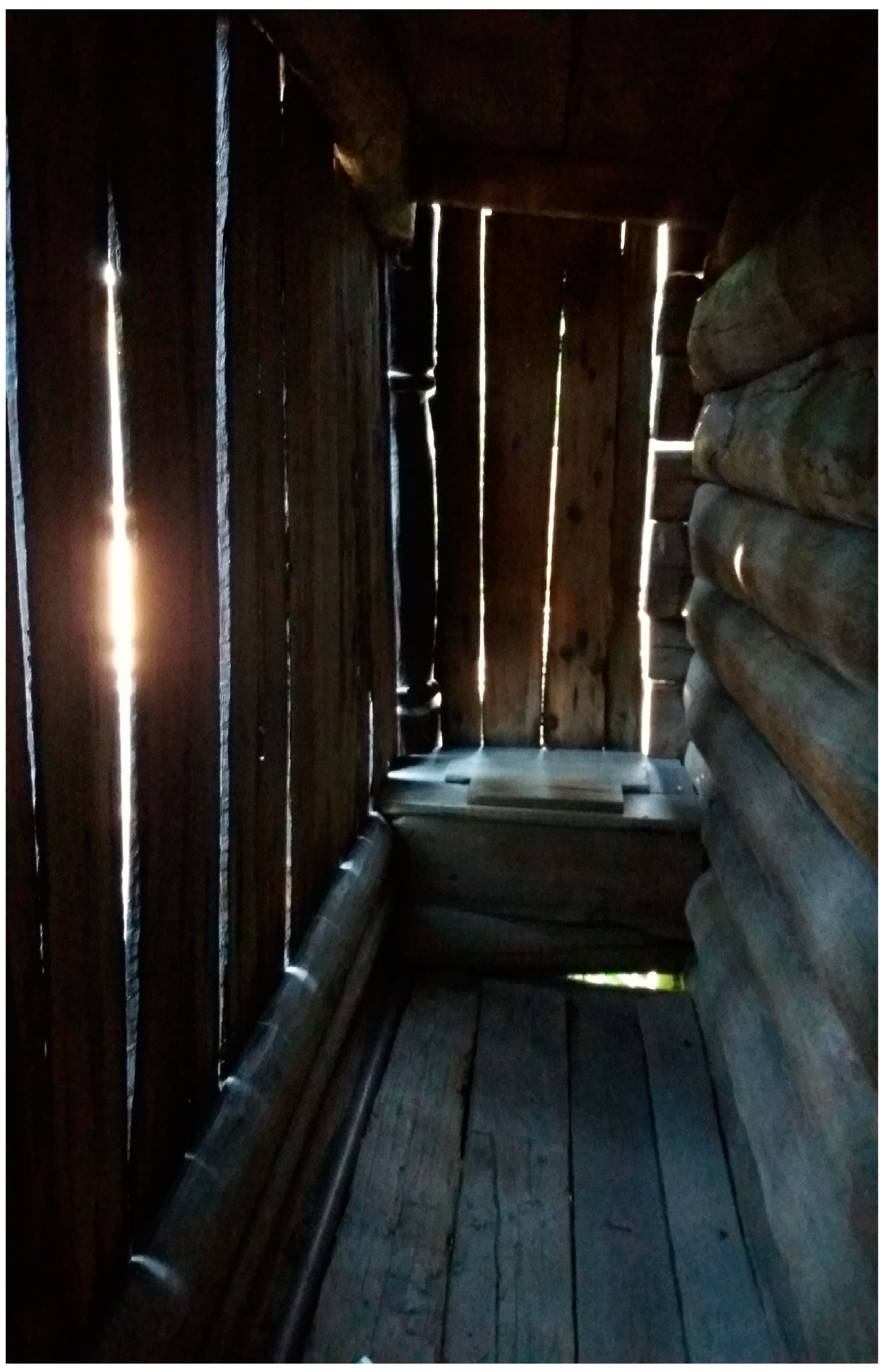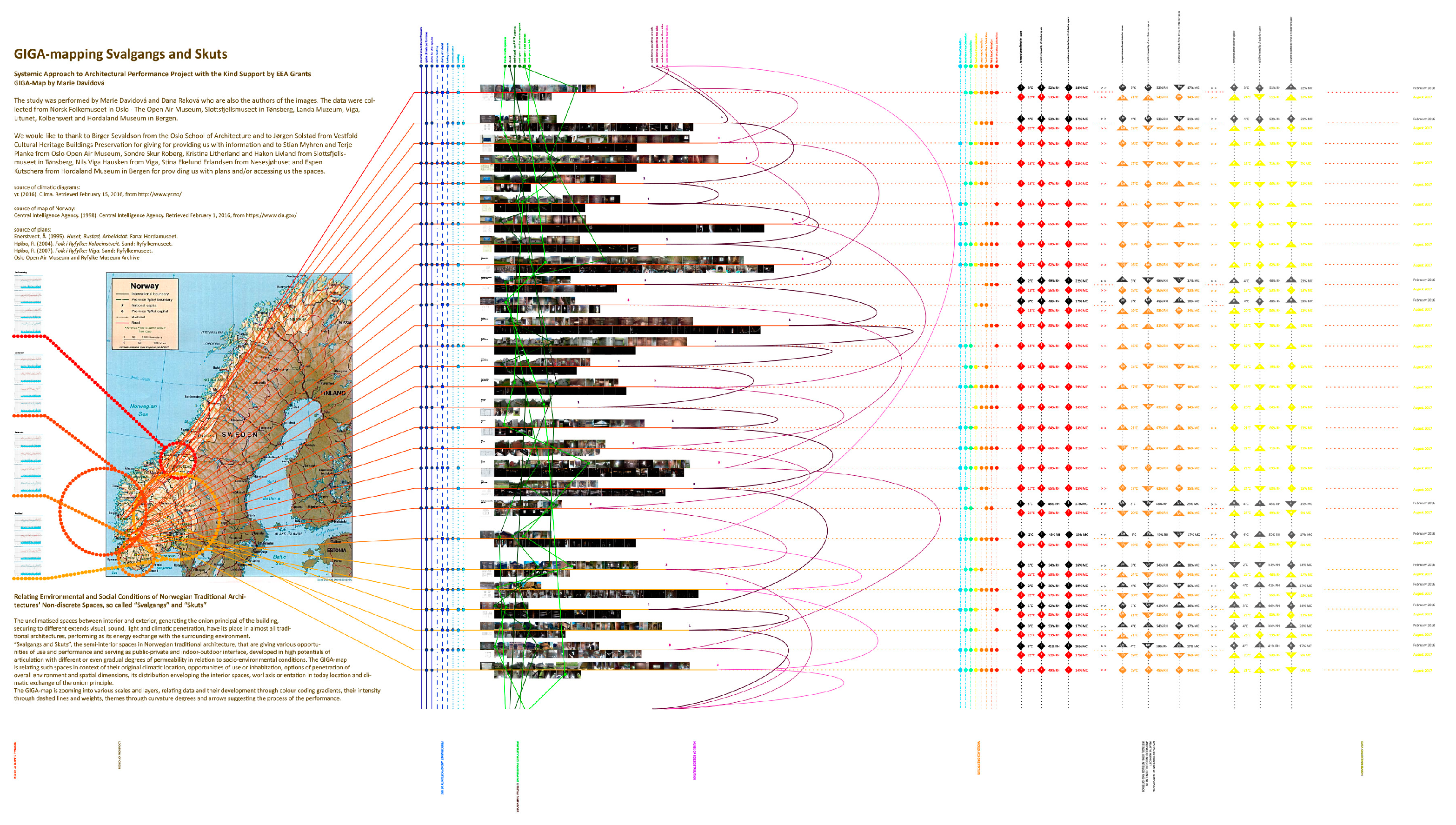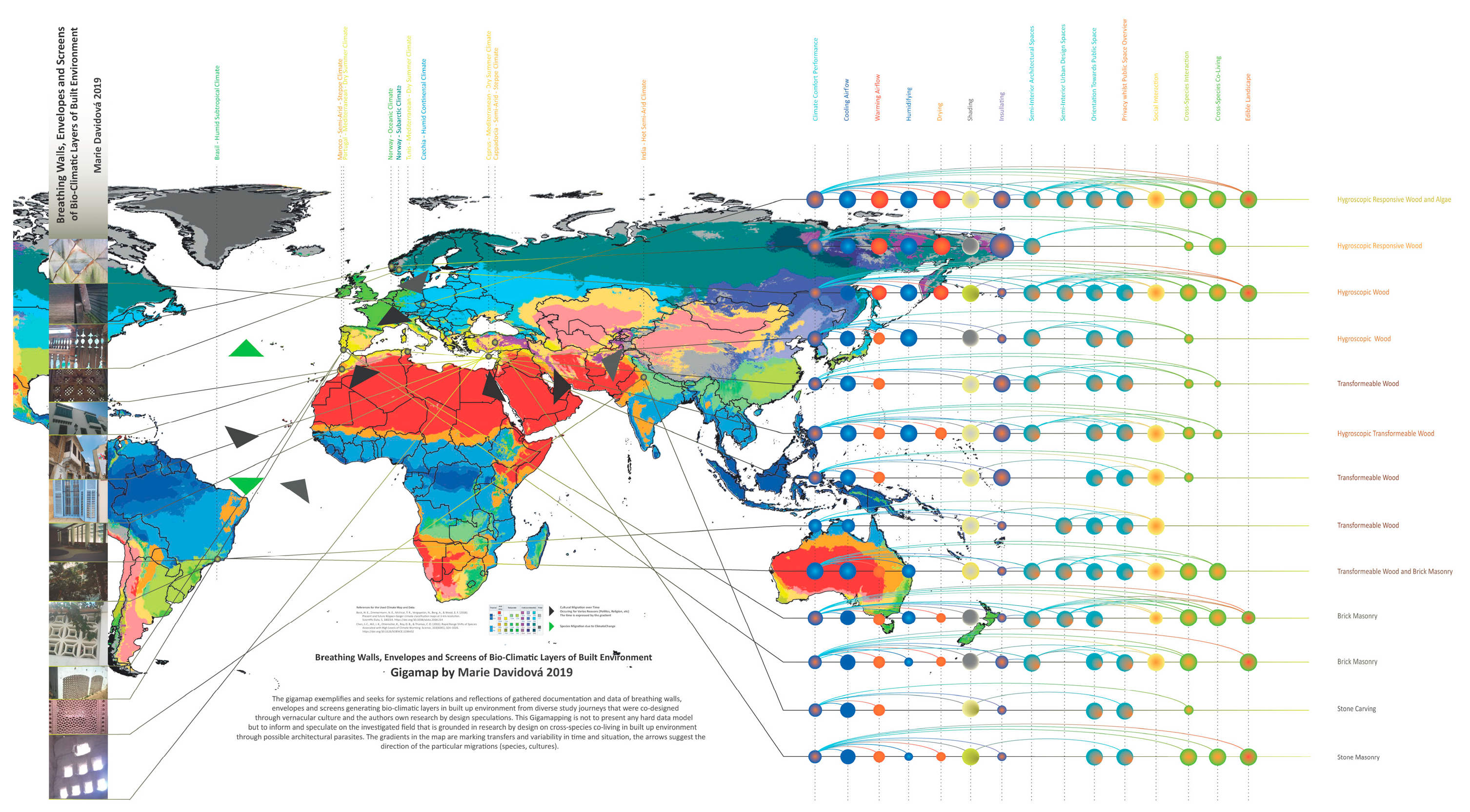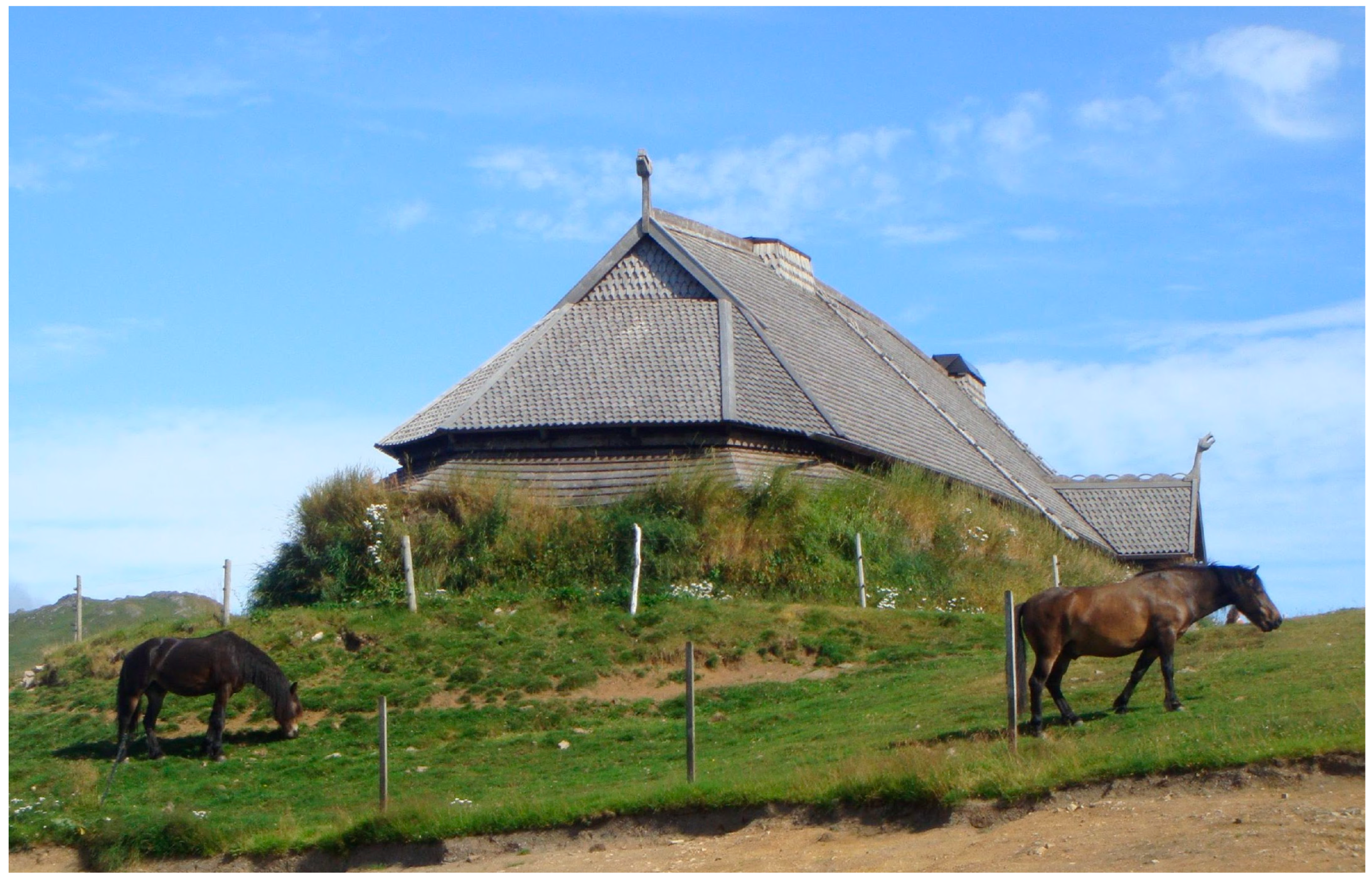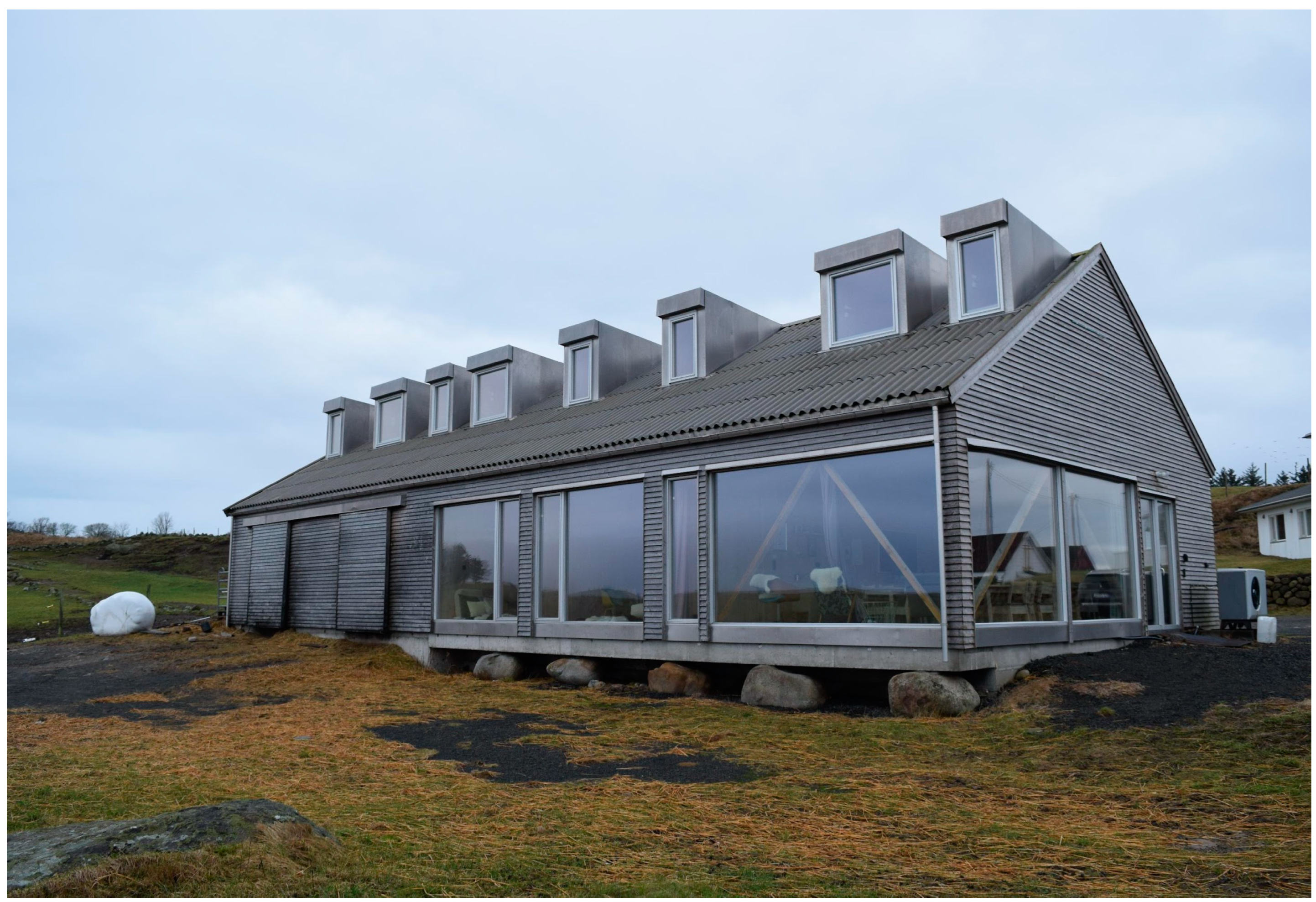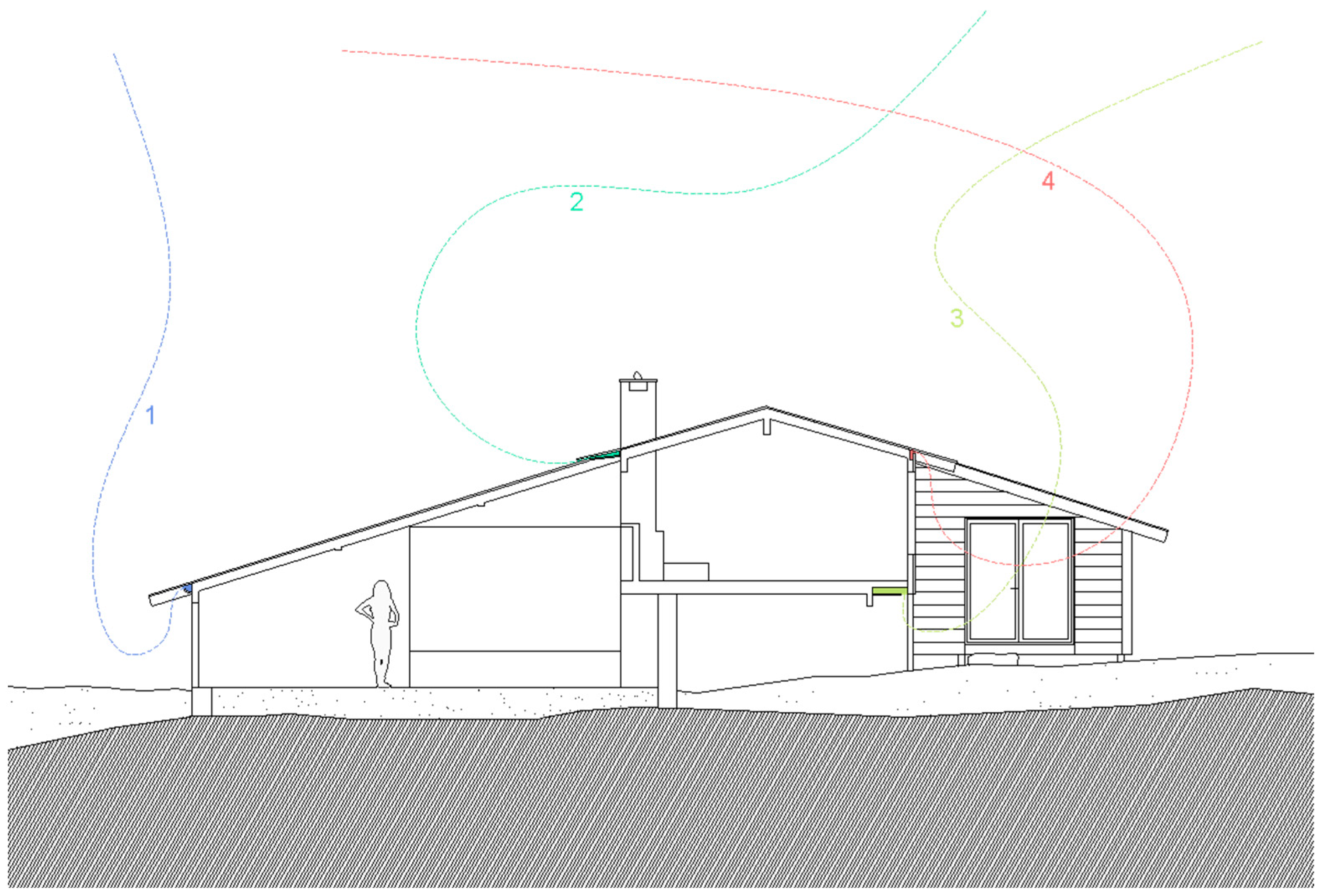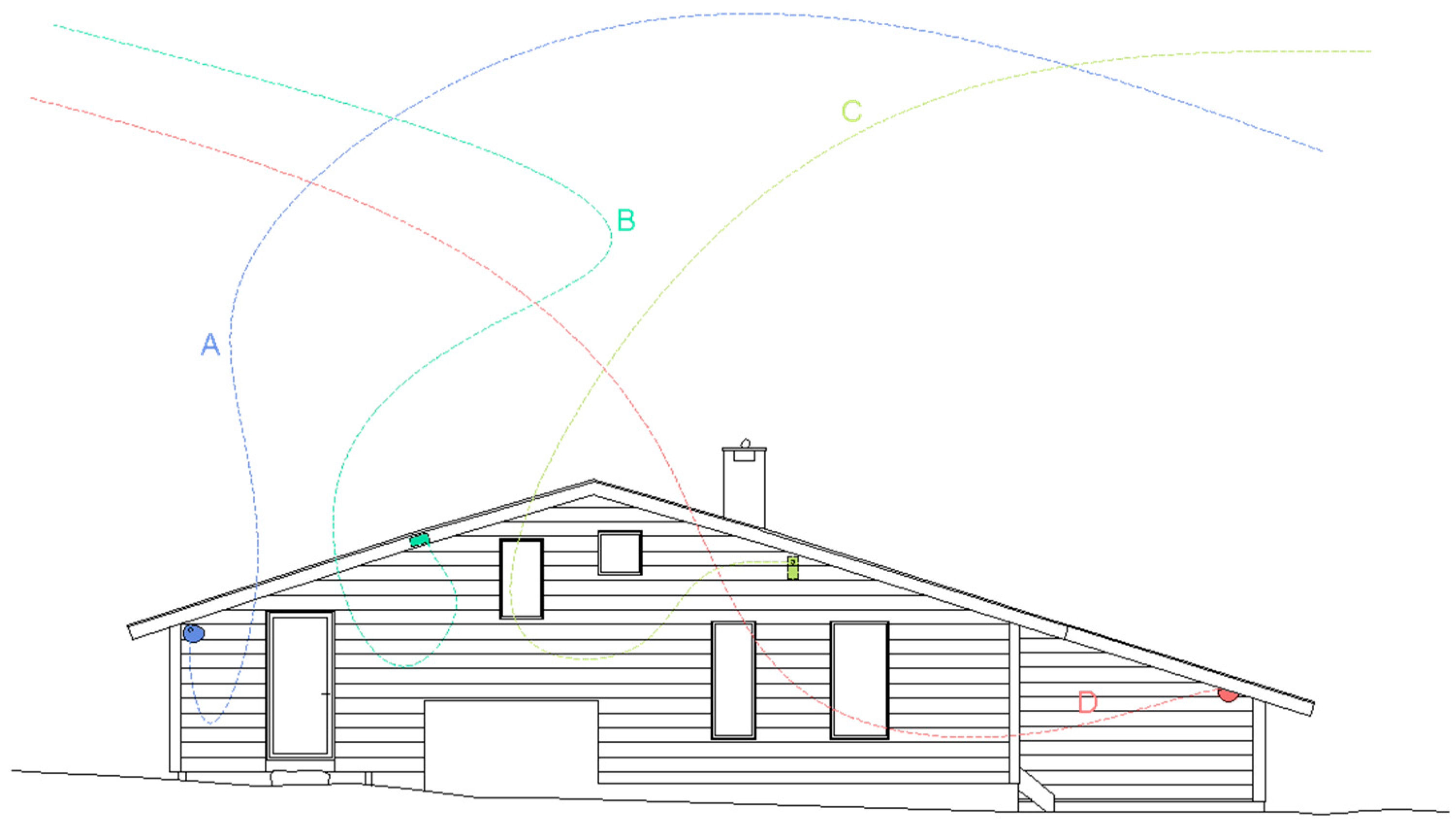1. Introduction
Despite contemporary trends in designing cities that boost biodiversity, why do we still predominantly experience cities as habitats for only a few types of animals and plants? Why do attempts at providing habitats for diverse species in cities seem to be not working?
It is alarming to see how unbuilt land, or even preserved habitats, are getting destroyed under economic pressure, profit maximisation and growth of quite often greenwashing scenarios that promise to extend natural and biodiverse habitats in cities. An example of this is Fælledbyen in Amager Fælled, close to Copenhagen, Denmark, the construction of which was justly stopped critically and in good time [
1,
2]. Amager Fælled, a former military site abandoned in 1964, is now a 223-hectare protected nature reserve, consisting of meadows, lakes, forests and a range of wildlife [
3]. The design proposal for Fælledbyen as the new development plan suggests a keen focus on protecting wild life and nourishing biologically diverse habitats, which is in strong contradiction to the preservation strategies for the existing wild life in this region and, as stated by many, another greenwashing claim. It seems that most people in the building industry have understood the urgency of the matter but do not know what the best practice for reversing the current trend could be, or they just do not care enough and use the matter as a tool for selling empty scenarios for maximised profit. Either way, this only leads to the construction of more unjust and homogeneous built environments in cities.
In many cases, and at different levels, these so-called “constructed” and “conditioned” natural environments fail to provide suiTable habitats for their nonhuman target inhabitants and either stay only in use by humans or as a representation of failed attempts leading to lost places in cities and connectivity throughout peri-urban and rural areas. On the other hand, the lack of tangible contact and interaction with the natural world in the everyday life of urban dwellers has led to an increased alienation towards the natural world and its crucial impact on our well-being. Additionally, this alienation has arguably been the root cause of the development of a kind of superficial connection to nature in some urban dwellers. As the philosopher Timothy Morton, among others, points out, a fundamental shift in the way humans relate to nature occurred during the onset of agriculture. Humans have started to compartmentalise what is human and not human, and this disconnect has only increased ever since [
4,
5]. Numerous discussions among biologists and ecologists refer to such personal alienation as one of the great causes of the ecological crisis we are facing today and ask for reversing trends that would encourage a widespread sense of intimacy in the everyday life of human city dwellers [
4,
6,
7,
8].
This research argues that one of the most effective ways of addressing the climatic crisis today is building an empathic view of the world we coinhabit with nonhumans. Empathy is “the action of understanding, being aware of, being sensitive to, and vicariously experiencing the feelings, thoughts, and experience of another of either the past or present without having the feelings, thoughts, and experience fully communicated in an objectively explicit manner” [
9]. In response to this, we (the authors) believe that the notion of kindness can stimulate individual empathic understandings and feelings of shared worlds that can lead to collective ecological action. Timothy Morton defines such actions as practised and experienced by so many individuals that they lead to behavioural changes on a global scale [
5]. However, these collective actions should not be confused with pre-authorised ways of doing. On the contrary, they arise from every individual’s understanding and feeling of the world of others—human or not. It is a collective action unique in its every individual action and based on an individual’s understanding of co-being, co-living, and sharing life on the planet—Earth. Yet, building awareness and understanding as such is essentially dependent on encouraging closer connections and interactions with nonhumans.
Sociobiological analysis of the human system of values demonstrates that “we do not value what we do to have lots of descendants … but desire heirs in order to preserve the life or lives we value” [
10]. To expand notions of the kinds of lives we value, we (the authors) believe better awareness of our companion species and an empathic view of our shared worlds through direct contact will help us understand our essential interconnectedness, leading to more liveable Earth futures.
Ecologists like Robert M. Pyle (also a natural history writer) believe that “direct, personal contact with other living beings affects us in vital ways that vicarious experience can never replace” [
11]. He defines the loss of neighbourhood species, which are within our radius of reach, as affecting our personal experience of nature, consequently leading to the extinction of experience [
11]. In regaining our connections to nature and forging “new links to the land”, he suggests that “we must resist the extinction of experience… [and] become believers in the world” [
11]. The connection with the natural world seems to be the most powerful or leaves the most impact on us when we are emotionally and personally touched by it. It is important to be surprised, to experience spontaneous encounters with the natural world/elements, or, generally, to be triggered or awakened by emotions such as awe, wonder or even fear. For this to happen, we need to be close to “the natural”, and in direct contact, to enable various modes of interaction with it. We (the authors) believe that this can create modes of understanding and awareness of the natural world that will be based on deeply pleasant and empathic personal relationships. In an empathic worldview, all living beings are allowed equal access to air and earth. We (the authors) believe that an empathic worldview is first and foremost rooted in being kind, with the notion of kindness as its main driving force.
The implementation of an empathic worldview requires action and calls humans into responsibility to take care of those we share Earth with. Regarding care as a way of doing the world, the anthropologist Deborah Bird Rose categorises three kinds of human response: those who seek to ease others’ suffering, those who simply turn away, and those who actually side with death [
8]. We require more of this first kind of human response to build and implement an empathic worldview.
It is no longer up to us whether or not we want to be considerate of others, human or not. The only way to work collectively for a liveable Earth future is with others for the co-performing ‘Gaia’ [
12]. There are no more “if only”, “we should”, “what if”, or these kinds of statements. It is time for careful, conscious and considerate modes of co-being and co-living with others. As Deborah Bird Rose highlights, being attentive to the particularity of creaturely worlds is an open-ended form of relating that rejects and overcomes readymade categories of human and nonhuman [
8].
We, the authors, believe that such a mode of being and way of living can be framed through the notion of kindness. When deeply and genuinely relating to something nonhuman through kindness, humans can start to empathically understand the other’s world and being. More recent research shows that every ecosystem on the planet is dependent on the well-being of microorganisms as they provide essential nutrients and break down organic material and that humans are dependent on their symbioses with invisible critters [
13]. Many thinkers and scholars believe that, based on these findings, a renewed worldview based on symbiosis, which embraces and acknowledges communal and cooperative modes of living, is in fact emerging. Donna Haraway refers to this as worlding [
7], which Palmer and Hunter define as “a particular blending of the material and the semiotic that removes the boundaries between subject and environment, or perhaps between persona and topos” [
14]. In this research, we (the authors) believe that we (humans) need to be worlding intensely every day [
7]. In this way, we may amplify our encounter with others by simply addressing their subjectivity and, as Deborah Bird Rose points out, “sometimes the other responds. From subject to subject, back and forth, across creatures who give and receive, a truly intersubjective dynamic of encounter arises” [
8].
We can change our view to see other humans and nonhumans as kinfolk: “One way to stop seeing trees, rivers, or hills only as ‘natural resources’ is to class them as fellow beings—kinfolk” [
3]. To make kin is to forge new connections and strong bonds with other critters, to make partial and robust biological-cultural-political-technological recuperation and recomposition, and to practice taking better care of kinds-as-assemblages (not species one at a time) [
6]. To make kin is the lifelong practice of being kind in our everyday worlding.
The notion of kindness is developed by the authors through the research project kind architecture and is an amalgam of three core philosophical concepts: solidarity [
15], kinship [
1,
2] and being kind [
15]. “Kind architecture” is an ongoing research project under development by Matthew Dylan Anderson and Sareh Saeidi that calls for an architecture that “nourishes and provides refuge for diverse ways of being and living with each other” [
16]. Kind architecture argues against today’s predominant architectural design tendency, which promotes isolation and segregation of the interior space from the natural world. By prioritising certain normative ways of human life, our sealed environments increase our alienation from the earthly consequences of our actions, exacerbating the very state of the ecological crisis we find ourselves in, leaving little space for divergent or subversive cultural and ecological modes of expression, and for other ways of being and living [
16].
Kind architecture re-thinks, re-situates, and re-makes architecture in ways that prioritise other-than-capital values; those of the old and the new. It is porous in its spatial attitude. It celebrates lifeworld, coexistence, beauty, and time. Kind architecture heightens the perception of human-nonhuman entanglements in built environments. It facilitates a renewed sociocultural disposition that leads to a more liveable earth-future [
16].
1.1. Three Concepts That Shape Kind Architecture
The authors’ notion of kindness aims to inspire an overarching worldview and approach to co-living and co-being that may renew the fundamental conditions for architecture. Kindness, and the subsequent practice of kind architecture, is informed by the three core philosophical concepts of solidarity, kinship and being kind.
Solidarity implies being perfectly united with all beings. The philosopher Timothy Morton describes solidarity as the fact of living in the biosphere. According to Morton, solidarity is both a thought and a feeling, a physical and political state; it is a pleasant confusion of feeling-with and being-with, and it emerges from the re-entanglement of human and nonhuman worlds [
4].
Kinship is a concept developed by Donna Haraway in critique of the Anthropocene. It emphasises connectedness as a way of making sense of the present and de-emphasises human exceptionalism in favour of multispecies kin making. For Haraway, “[s]taying with the trouble means making odd kin; that is, we require each other in unexpected collaborations and combinations, in hot compost piles. We become—with each other or not at all” [
6].
Haraway calls on us to redefine, stretch and recompose the concept of kinship [
6] to include more than affinities based on family, genetics and species. She suggests that “[o]ne way to live and die well [on Earth] as mortal critters” is to join forces, to biologically, culturally, politically and technologically reconstitute and recuperate refuges, which must also “include mourning irreversible losses” [
6]. Through solidarity and kinship, we can learn to practice acknowledging the interdependence between beings of different species (earthlings) and build a renewed holistic view of the cosmos.
Being kind builds on Timothy Morton’s discussions on kindness, which he defines as humans’ acknowledgement of others (specifically nonhumans) and “the deliberate forging of links” with them [
4]. Being kind is therefore based on the acknowledgement of our shared worlds [
6] and the actions that result from this awareness [
4,
6]. For Morton, being kind:
… means including nonhumans in our social designs, not because it’s nice or because we need to. Not for any reason involving good or evil. We need to include nonhumans because it’s fascinating. Because we can’t help it, because we know too much. We want our own use of our own house to be affect by how frogs and lizards and dust use it. It already is anyway. There are all kinds of filters and air conditioners and mildew-resistant paint to eliminate nonhumans. You just have to imagine an upside-down version of that. Not that you’re going to make a house that kills humans; then the humans wouldn’t be around to relate to the nonhumans… This entails the possibility of allowing other beings to have pleasure. For some reason, this part of your house is where sparrows, not you, get to have fun. But you get to have fun by appreciating the sparrow fun. You become fascinated by enhancing and expanding nonhuman pleasure modes [
4].
Building on these core concepts, kindness embraces the empathic awareness and worldview discussed throughout the introduction as an overarching state of co-being and co-living. In kindness, we tune our senses to the fact that others are around us; we acknowledge that we live together and are interdependent and interrelated. Thereby, we gain a form of appreciation for their presence. In one regard, architecture is a manifestation of the ways humans relate to the environment. Kind architecture thereby mediates reciprocal relations between its human and nonhuman inhabitants and accommodates everyday worlding as an aesthetic experience.
1.2. Three Scales of Consideration
At this time, animals are increasingly interacting with and seeking refuge in the human-built environment. In order to develop renewed modes of architectural practice that are inclusive (rather than resistant) to human-nonhuman co-living, the ways in which built architecture will aid in halting biodiversity loss must be understood both on humans’ and animals’ terms at three scales of consideration: territorial, local and detail.
The territorial scale understands buildings as situated within dynamic and global animal migration corridors and recognises the role humans play in the ongoing fragmentation of these corridors through the development of unbuilt land. Such fragmentation significantly hinders animals’ ability to follow seasonal movement patterns and seek food and shelter. Without such necessary movement, species die out, which in turn initiates events like extinction cascades—where the loss of one species has a compounding effect on local and broader ecosystems [
6,
8]. In recognising both the necessity of preserving and recuperating animal migration corridors and buildings’ position within migration corridors, architectural practice can be seen as a field of exploration for human-nonhuman co-living.
The local scale considers buildings and their surrounding local environment, focusing on the spatial and material relations that are necessary to support diverse local ecosystems. At this scale, architects must recognise both the impact of physical changes to the environment on local and visiting species and the complexity of the ecological circumstances in which buildings are situated. At the local scale, architectural practice can aim to preserve, recuperate and support existing and lost ecological relationships through the design and implementation of both the transformation of existing buildings and, where necessary, new structures.
The detail scale considers both the ways in which nonhumans already inhabit the built environment and how buildings may be made open to support increasingly rich human-nonhuman co-living through spatial and material means. At the detail scale, architectural practitioners may seek ways to provide refuge and increase co-living on terms that benefit both human and nonhuman inhabitants. Architectural knowledge and professional skills are finely tuned to the spatial and relational needs of users, as well as the material relations required to support good lives. This knowledge can be applied to organise the built environment in renewed ways for both humans and nonhumans in order to move beyond the predominant human-centric focus of architectural practice.
2. Materials and Methods
The theoretical framework of this article is built on relevant and invaluable anti-anthropocentric perspectives within multidisciplinary environmental humanities, ecology, philosophy and architecture, with a focus on the authors’ notion of kindness as a mode of being and a collective empathic worldview that we as humans need to nourish and continuously advance. We (the authors) argue that kindness in architecture can help reawaken or evoke ecological values in humans through direct sensuous contact with nonhumans, and foster a higher understanding and empathic view of nonhuman worlds. In addressing the operational potential of kindness as a design concept, design discussions in this research focus on porosity as both material and spatial articulations in architecture that support co-living for humans and nonhumans. This informs the selection of historical and contemporary case studies.
The knowledge built through the selected literature and case studies informs the work-based component of the research in a research-by-design mode of design explorations. These explorations involve the design (and future implementation) of suiTable niches for selected bird species in a real-world setting. The design prototype is the renovation and extension of a private cabin on the southern coast of Eastern Norway, where the selected bird species have established nesting in the existing roof structure. The design prototype focuses specifically on the provision of nonhuman niches in a small-scale architectural project to support existing habitats and migration corridors.
This article discusses research-by-design [
17,
18] work that is achieved through historical case studies and its knowledge application to practice. Researching historical and vernacular case studies to inform contemporary practice has been argued by many authors across the architectural, urban and landscape design fields [
19,
20,
21,
22,
23,
24,
25,
26,
27,
28]. This has always been approached through a “reflective practitioner” [
29] perspective rather than as any historical or conservation study [
26,
27]. The mentioned authors focus on either climate or biodiversity support or both through the traditions that have been developed over generations. The point is not that people were smarter in the past in developing often advanced, low-tech technologies. These technologies were tested and developed over generations in feedback loops, often upgraded or rejected. Therefore, it is wise to learn from these vernacular cultures, although in certain ways, they are not directly applicable to today’s social and environmental requirements. It has to be a designer (which means all design professions), or rather research by designer, who differentiates what to apply and how to renew this knowledge for current and future circumstances.
Architecture as a discipline constitutes a field where highly different kinds of knowledge amalgamate. Its professional skills consist of the ability to both interpret through rational reasoning and discover unexpected potentials through experimentation. The potential for using this in research became increasingly evident at the beginning of the new millennium, with possible benefits for both academia and professional practice [
30]. This is valid across all design fields, including architecture, which is an inherently transdisciplinary profession. Architects have to apply a “multicentred perspective” [
31,
32] to their design, integrating social and technological systems and ecosystems. Therefore, co-design with multiple stakeholders or stakeholders’ representatives often takes place. Almost always, architects co-design with their clients, structural engineers and community representatives, for example. In the case of this research, close co-design with the client (an artist) in the design exploration provided invaluable insights and knowledge to design from nonhuman perspectives [
33].
Therefore, the methodology consists of two parts: hands-on historical and contemporary architectural investigations, and co-design (a feedback looping process) and co-creation (a collective act), as defined by Sanders and Steppers [
34]. The critical point is that this research is being investigated through practice [
35]. As the client, the second-generation inhabitant of the cabin, is part of the design team in the design exploration, the project will continue to be monitored, observed and redesigned, as was the case in vernacular architectures over generations.
4. Design Exploration: L513, a Cabin for Humans and Birds
This design exploration focuses on an ongoing architectural project and research by design involving the renovation and extension of a wooden cabin near Stavern on the south-eastern coast of Norway. The project is situated roughly 300 m from an exposed coastline in an area developed with cabins in the second half of the 20th century. The area is bordered to the west by a stretch of unbuilt land where further development is not permitted and by a protected bay to the east.
The research lays out three scales of consideration, focusing on three avian species that currently inhabit the cabin in different ways. Design criteria for design, construction and future life, as well as first-hand experience and observations of the human-nonhuman co-living at the cabin, are presented and discussed.
The research-by-design method employs a pluralistic method involving in situ observation and work-based material research: hereby the ongoing design and implementation of the project. The architect responsible for the project is Steinlia AS, led by the second author of this research. The client and main human inhabitant of the cabin is an artist. The project is being developed through close co-design by the architect and the client, with both drawing on their respective professional skills, knowledge and personal experience. The work process and research by design occurring in the project are based on a constant back and forth of dialogue, written correspondence, creative work including models, drawings and writing, discussion, field research and visits to the project site with relevant members of the project team such as carpenters. The work is framed by the ongoing care of both human and nonhuman inhabitants of the cabin and its surrounding environment, informing spatial planning, material and resource utilisation, and process coordination. Decision making and design development are left open-ended and based on findings made underway.
This design exploration provides a discursive component that both represents and clarifies the work-based research process and provides “interpretive access to the findings” [
49]. Work-based research balances clearly defined research questions and the limitations these questions place on open-ended investigative processes, particularly regarding architecture where decisions made underway embed themselves and generate new conditions for later decision making. However, such research offers ways of making the world rather than representing it, allowing us to “linger at the frontier of what there is” and give “an outlook on what might be” [
49]. Work-based research is thereby vital in searches for renewed approaches to the conceptualisation, design and implementation of the architecture.
At the time of writing, the project has received building permits, and detailed design and construction planning is underway. The feedback loop occurring within the project, which includes ongoing evaluation, will continue to inform decisions and action throughout implementation and the life of the project, with a long-term perspective established through the client’s planned inhabitation of the cabin.
4.1. Situating the Project
The existing cabin is used primarily during the spring, summer and autumn by its human inhabitant—the second generation of one family who has owned the cabin since its construction, and by three species of migrating birds who have nested in niches within the building envelope throughout the life of the cabin. The brief for the project involves renovations and physical upgrades to the existing cabin’s façade focusing on insulation, moisture control, ventilation and weather protection layers as well as minor changes to structure and fenestration. Additionally, a new extension to the southwest will provide an atelier/artist studio for the client and semi-interior space between the atelier and the surrounding environment.
Due to increasing pressure on migration corridors, ‘wild’ habitats and unbuilt land through land development and infrastructure projects, the care and support of the cabin’s avian inhabitants is a major concern throughout design, construction and future life.
4.2. The Cabin’s Avian Inhabitants
Throughout the life of the cabin and the current human inhabitant, three species of birds have also inhabited niches within the building envelope in various manners:
Cyanistes caeruleus, Eurasian blue tit (blåmeis in Norwegian)
Passer montanus, Eurasian tree sparrow (pilfink in Norwegian)
Delichon urbicum, northern or common house martin (taksvale in Norwegian)
Human use as a summer cabin coincides with all three species’ inhabitation, with human-nonhuman co-living occurring mainly between late March and October each year.
The Norwegian Ornithological Association (Norsk ornitologisk forening) estimates that there are around 200–300,000 pairs of Eurasian blue tits in Norway. They are mostly non-migratory and are to a large extent dependent on human settlements for winter nesting. They hatch several sets of young each year 12–16 days after laying. Young blue tits leave the nest after 16–22 days. They do not store food for the winter and so survive at levels of near hunger on birch seeds and the stones of rowan and barberries. In the summer season, they feed on insects and spiders [
50].
Eurasian tree sparrows feed on insects during the summer, and grains and seeds during the winter. They build rounded and sheltered nests, which are often placed in a tree or building cavities. They primarily inhabit Norway’s east and southern regions, but have recently been observed in central and northern regions. There are an estimated 60–120,000 pairs living in Norway. They are non-migratory but may wander regionally outside the breeding season. Their eggs hatch 12–14 days after laying, and the young leave the nest 15–20 days after hatching [
51].
Northern or common house martins are found throughout Norway and feed solely on insects that they catch during flight. They range up to two kilometres from their nests in search of food. Although they do nest in natural cliff faces, they mostly settle in the roof cavities of buildings. They build their nests with clay and straw, insulated with feathers and straw, taking around 10 days to construct. Eggs are laid during May and June and hatch 14–16 days after laying. The young leave the nest 22–32 days after hatching. They can produce several sets of young in a season. They tend to nest in colonies consisting of between two and fifty pairs, with just centimetres between nests. It is estimated that there are only 30–50,000 pairs in Norway, and the species is listed as near-threatened. Northern or common house martins are distinctly migratory, and European individuals spend their winters in sub-Saharan Africa [
52].
4.3. Who Else Lives Here?
Several Eurasian blue tit and tree sparrow individuals prepare their winter homes in the cabin during the autumn. In recent years, during the spring, it is mainly the sparrows who have established nests in the ventilated roof cavity over large living room windows in the eastern façade. Their exact arrival has not been observed, but they arrive after the cabin’s human inhabitants do in March. They become highly active in May and appear to have several sets of young and fly in and out of the roof space all summer. They sometimes inhabit the corresponding roof cavity over the cabin’s western façade, over an outdoor terrace.
Several house martins inhabit the western roof cavity over the terrace. They are observed to arrive around the end of May each year. The martins are observed to have only one set of young people each season, and by the end of August, the young begin to fly and leave the nests but are observed to gather on nearby overhead electricity lines in large family groups.
The birds are disturbed by the comings and goings of the human inhabitants during periods of high activity, especially in May. They become very agitated by human activity during this time, especially when living room curtains are open and they can see the human inhabitants inside, as well as during warm periods when terraces and the surrounding site are in human use. Upon the arrival of humans, the birds have grown comfortable with having the cabin to themselves and become irritated both in terms of increased use of outdoor spaces and the sudden presence of others behind the large windows, especially at night. This, in turn, stresses the owner and impacts her use of the cabin due to her concern for the birds’ well-being. Over time, however, the birds do become comfortable with human presence.
Inhabitation by birds in other parts of the cabin was not observed at the time of writing.
5. Discussion, Conclusions and Future Visions
The study came up with several design criteria and future visions for the new project. It focused on how humans and nonhumans are willing to live together. Therefore, inspiration from ‘svalgangs’, ‘skuts’ and breathing envelopes come at stake. Maybe we do not appreciate birds nesting in our living room, and they do not appreciate it, either. However, the provision of the architecture of semi-interior spaces can bring the pleasure of more-than-human interaction.
5.1. Design Criteria for Multispecies Flourishing
Within the scope of this design exploration, selected design criteria focus on the ways architecture may provide for ongoing flourishing for the cabin’s human and avian inhabitants. The explorations seek opportunities both within the building envelope and through the addition of new elements to provide niches for the three bird species to establish their own nests.
The human inhabitant’s goals for the project include reworking the existing cabin and providing new space for her life, her creative practice and companions (both human and nonhuman). Resisting the conventional life and culture of such cabin developments in Norway, the owner wishes to establish new modes of inhabiting the cabin that include a slightly extended season and the ability to work artistically with media that include locally sourced raw materials and pigments. At the same time, she expresses great care for the plant and animal species that surround and inhabit the cabin. Of major concern is the improvement of the lives of three bird species who also inhabit the cabin, and opening up to a future increase in co-living, including insects.
5.1.1. Proximity: Awareness and Privacy
An awareness of the presence of the avian inhabitants is seen as a quality; however, the current proximity, or closeness, between the humans and the birds causes conflict in certain circumstances. Each year, the birds tend to become active in the cabin earlier than the humans, establishing their nests in roof niches entered through gaps between the wall and roof. The project should thereby provide niches for the birds which are not disturbed by the owner’s arrival to such extent as they are currently, thereby reducing their early-season stress while at the same time maintaining the owner’s and guests’ awareness of co-living. New niches should therefore be placed away from human entrances, outdoor living areas and large windows, and will be concentrated on the northern façade.
5.1.2. Humans’, Animals’ and Architecture’s Health and Well-Being
Currently, the birds have improvised the inhabitation of niches within the ventilated roof cavity between inner and outer layers of weather and moisture protection. This space has a physical and thermal role as a semi-climatised space between envelope layers and can be described in similar terms to ‘svalgang’ or ‘skut’ with regards to both thermal and spatial performance (albeit on a much smaller scale). This cavity is present in most Norwegian structures and offers an exciting zone of exploration within the framework of this research.
The roof cavity has proved adequate due to the birds’ ongoing use of this niche. However, it is not an optimal circumstance, considering the health and well-being of the human and bird inhabitants and the architecture itself.
The proximity of the niche entryways to outdoor areas used by human inhabitants causes hygiene issues due to the accumulation of excrement and other matter deposited by the birds. At the same time, the birds inhabit niches that were not considered for such use, but rather have a technical function in the performance of the building envelope. The niches are narrow, damp and susceptible to overheating (a factor which will increase with global warming), as well as being constructed of materials that are not conducive to the birds’ well-being. Birds are exposed to synthetic insulation and building membrane materials within niches, which may be ingested and influence air quality in ways that impact the birds’ health.
In order to improve their own living conditions, the birds improvise in ways that damage the functionality and longevity of the architecture itself. They hollow out their niches to provide more adequate spatiality by removing insulation and waterproofing materials and reducing the integrity and performance of vital building elements. Excrement and other deposits within the niches further contribute to rot and decay, exposing the construction and interior spaces of the cabin to damage. New niches, or spaces, for bird inhabitation within the roof cavity must be defined more clearly and constructed using robust materials, such as wood and ceramic. The provision of clear and robust niches allows for more susceptible parts of the roof cavity to be made inaccessible to birds.
5.1.3. The Process of Building: Preservation and Care
Of major concern is the planning and carrying out of building works on site in ways that limit the disruption to the current avian inhabitants of the cabin—something which is normally considered in relation to human users of architecture. Both the timing of work and the provision of suitable temporary accommodations, where necessary, are considered throughout this phase of the project. Seasonal factors that limit the ability to build, as well as the arrivals and inhabitations of the cabin, provide a framework within which to organise the different work components on site.
5.1.4. Increased Richness, Diversity and Flourishing at All Scales of Consideration
Building on the first three design criteria, the project seeks ways to actively foster improvements to ecosystem richness and diversity at the detail, local and territorial scales through the built interventions. This informs material, spatial and procedural considerations and at the same time aims to improve conditions for human, animal and vegetal inhabitants of and visitors to the site. Where possible, the project aims to minimise its impact on vegetation and animals and to open up to (rather than resist) new forms of inhabitation.
5.2. The Planned Project
The project aims to consider the design, materiality and implementation of the renovations and extensions at the territorial, local and detail scales of consideration, with a focus on improving circumstances for both human and nonhuman inhabitants of the cabin according to identified design criteria.
Entrances to the existing ventilated roof cavity will be repositioned and reorganised to reduce negative proximity for both human and nonhuman inhabitants. Entrances will be positioned away from large windows and actively used outdoor areas through both façade renovations and the new extension, focusing on the lower eastern façade as well as the north and western facades, where there are fewer and smaller windows, and humans are less present in adjacent outdoor areas. The repositioning of entryways to the roof cavity aims to maintain the birds’ access and ability to nest, thereby maintaining the birds’ presence, which is sensed by human inhabitants through the birds’ activity and use of the surrounding environment (see
Figure 10).
Inspired by ‘svalgang’ and ‘skut’, a new semi-internal space between the atelier and surrounding site will introduce new forms of human inhabitation in contact with both interior spaces and the surrounding environment. Placement and design of existing and new fenestration is considered to increase contact between interior rooms and the surrounding environment.
The repositioning of roof entrances and the provision of new niches aims to reduce the negative impacts of excrement and collected material on outdoor areas actively used by humans. Entrances will be placed over areas with natural, porous ground cover so that excrement and other materials will naturally decompose rather than accumulate.
Where possible, niches within the roof cavity will be adjusted to provide more suitable spatial and material conditions for the birds, as well as access to yearly cleaning. Access to areas where birds interact with harmful materials will be reduced. Specific focus is placed on the meeting between façade cladding and roof overhang, as well as on the cavity immediately behind where installation of more suitable niches can occur. Additionally, hollow spatial elements built from wood and ceramic will be placed around the site and attached externally to the existing façade cladding. Elements should be screw fixed to allow for easy repositioning, maintenance and replacement when observed to be needed. These will provide new niches between the north eastern façade and the roof where the varying roof height can be exploited to mount niches suited to the specific bird species and their nesting preferences with regards to height above ground (see
Figure 11).
Accessible niches are also considered in terms of reducing damage to the buildings’ materials and structure, as well as providing access for seasonal cleaning of niches by humans, where observed to be necessary. Learning from the case studies, new materials and detailing are designed to be low-tech to simplify future adjustments where needed.
At the time of writing, the final stage of planning for façade renovations was underway. To limit the impact of works on the birds, the renovations are staged in two phases, beginning with the southern and eastern facades, before periods of high activity among the birds. Renovations to the northern and western facades, as well as the extension, will be carried out after the birds have resettled the southern and eastern facades, and after the summer period of high activity at the cabin but before winter conditions prohibit construction activity.
Temporary niches will be set up on site through the installation of commercially available bird boxes as an extra offer should the birds be disturbed by particular works.
By providing new kinds of niches, especially on the northern façade at varying heights, the project aims to increase the number and diversity of birds and species inhabiting the cabin. Through general improvements to existing niches and increased openness to diverse inhabitation, the project aims to provide for increased richness of use and flourishing for all of the cabin’s current and future inhabitants.
Through ongoing and long-term evaluation by both the client and the architect, and through the implementation of materials and details that are simple to access and change, necessary adjustments can be made throughout the lives of the inhabitants and cabin in order to ensure ongoing multispecies richness, diversity and flourishing.
